Wildfire Preparedness and Resiliency Event Resources
Wildfire Preparedness Event Resources
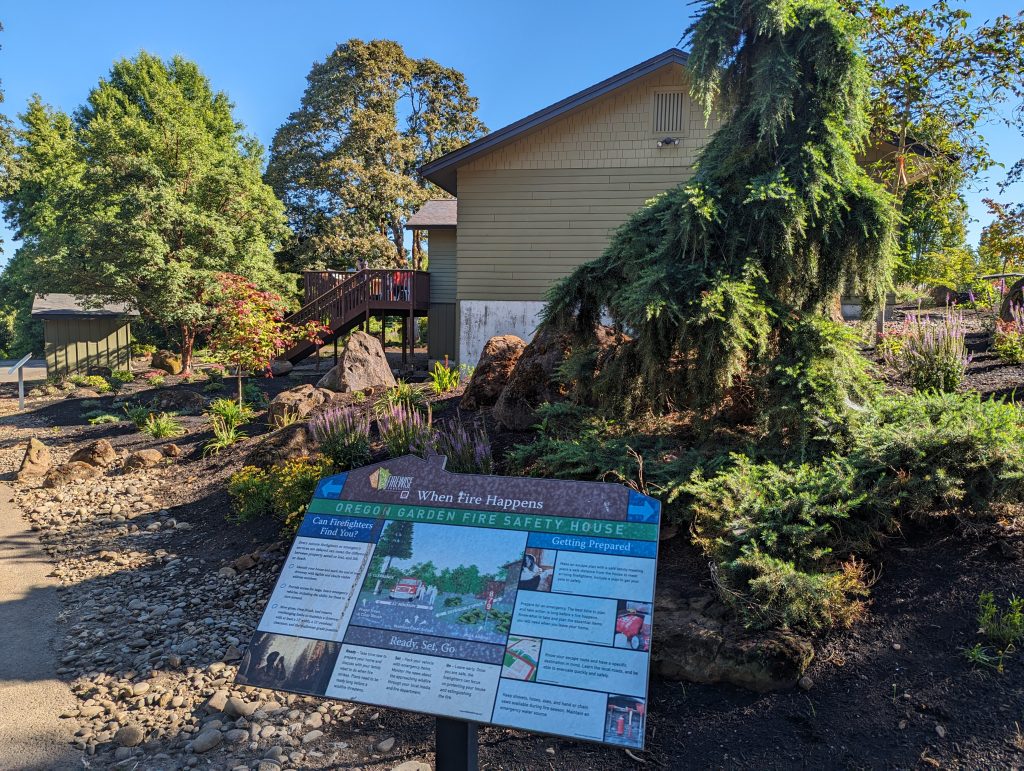
Marion Soil and Water Conservation District had the privilege to host a Wildfire Resiliency and Preparedness event at the Oregon Garden on July 22nd, utilizing the Fire Safety House. The goal of this workshop was to teach landowners how to evaluate and mitigate the risk of wildfire around their homes and be prepared in case of emergencies.
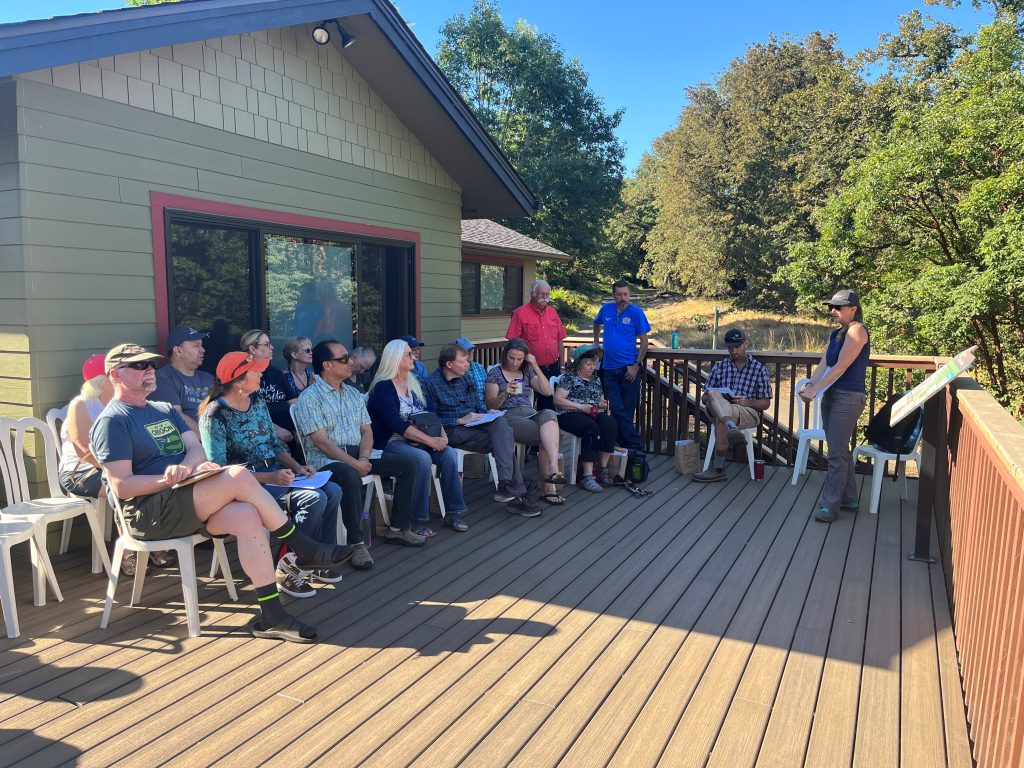
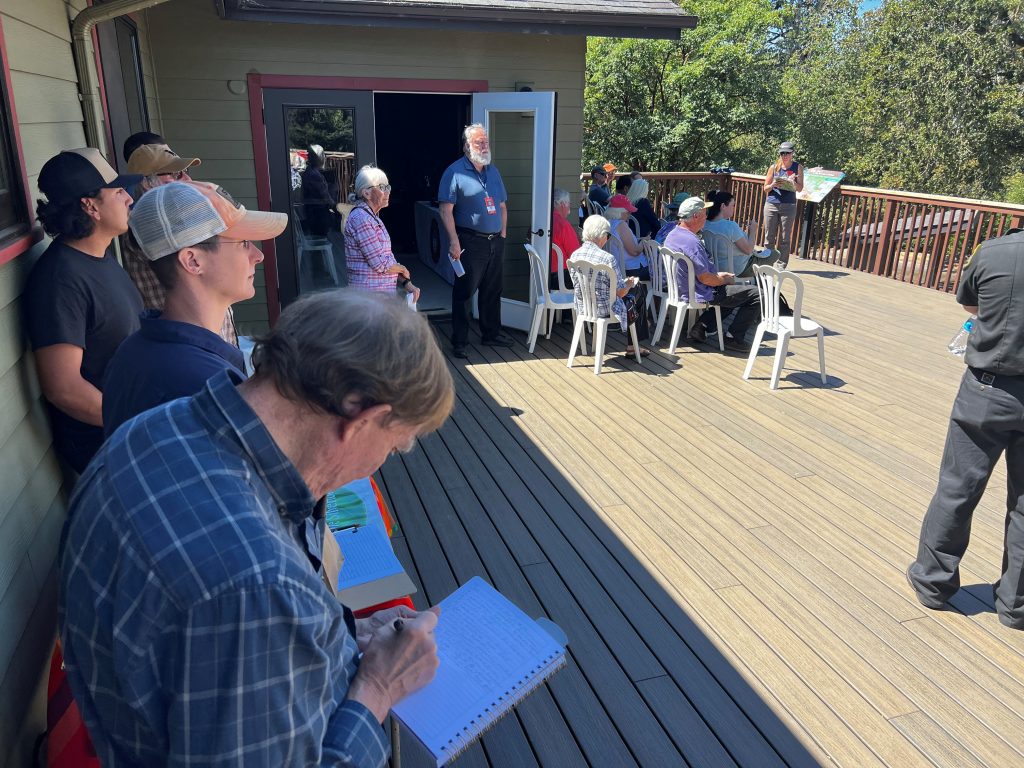
We had around 40 people present including class participants, instructors, and volunteers. After introductions, we divided into four smaller groups, and everyone got to participate and rotate through four 30-minute lessons in and around the fire safe house taught by experts in the field. Topics covered included:
- Defensible space taught by Kayla Bordelon, OSU Extension Fire Specialist
- Home hardening taught by Stephanie Stafford, Fire Risk Specialist at the Office of State Fire Marshal (OSFM)
- Emergency Preparedness taught by Chief Bill Miles, Keith Veit, Max Hughes, and Dan Brown from the Silverton Fire District
- Fire-resistant landscaping taught by Brooke Edmunds, Community Horticulturalist for OSU Extension Master Gardeners
Additional partner support included:
- Doe Mountain: A fuels reduction company for private lands.
- Sustainable Silverton: A community group focused on sustainability and climate resiliency.
- Oregon Department of Forestry An agency focused on public and private forest lands in the state.
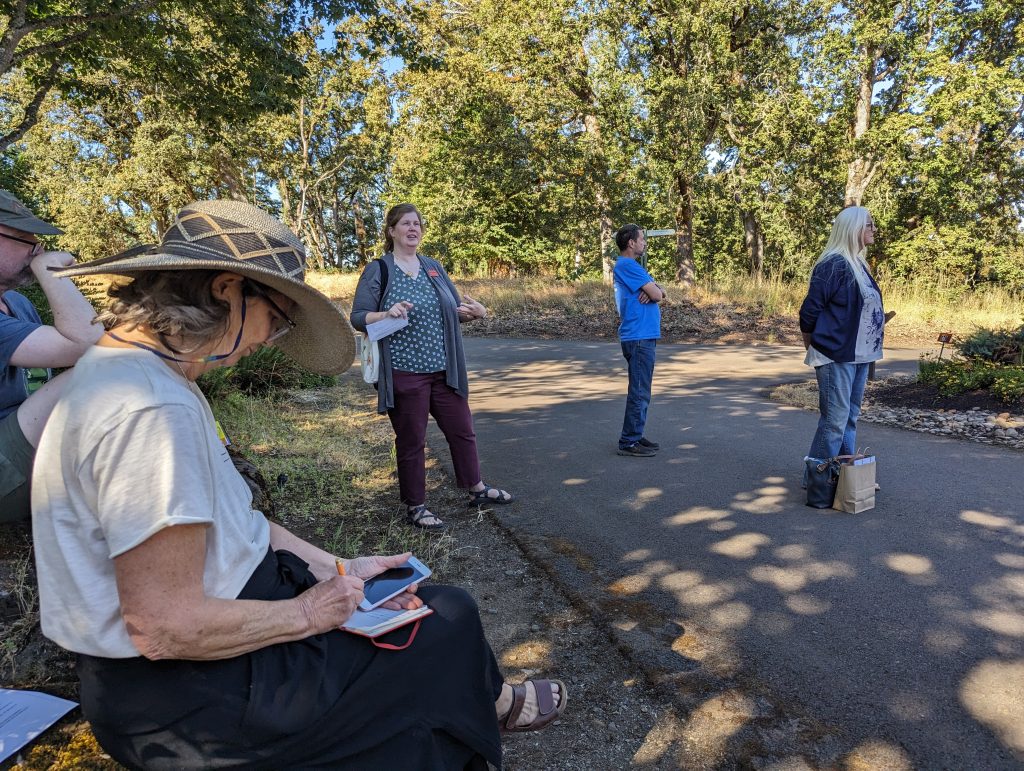
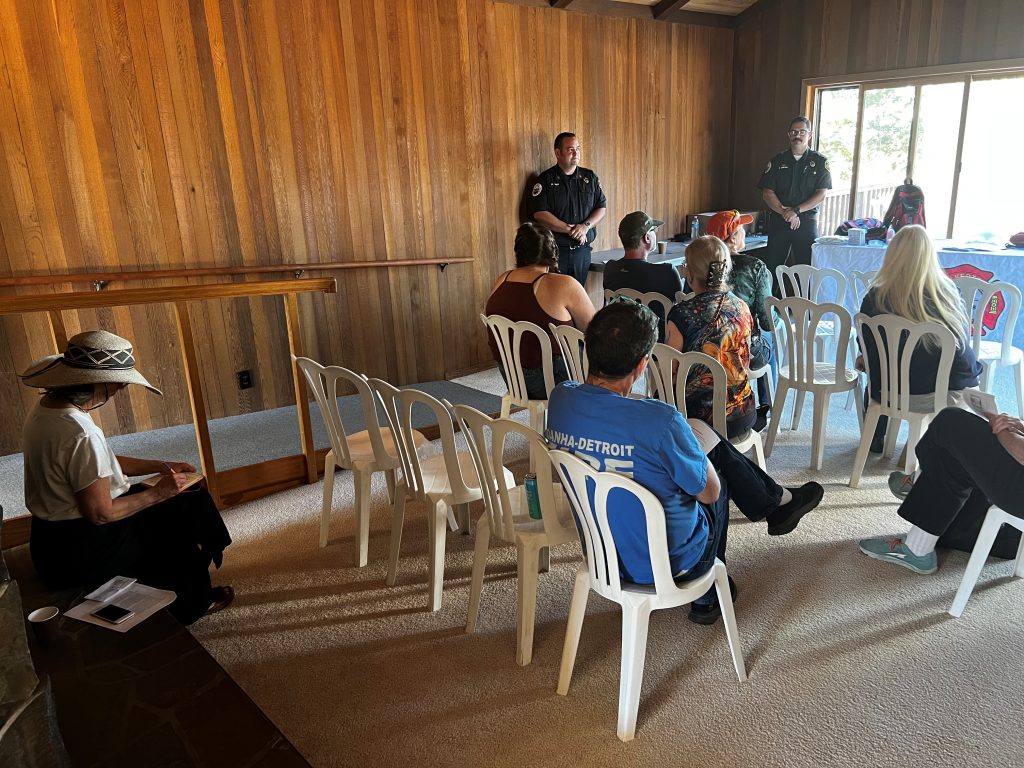
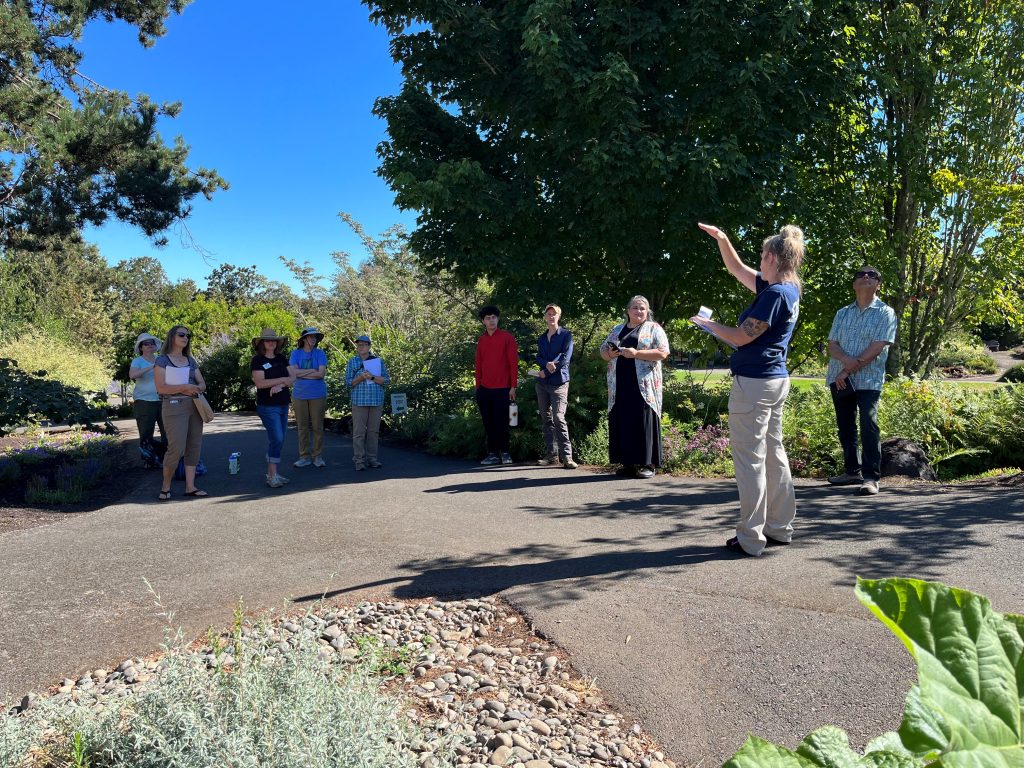
The learning was active with lots of group discussion, engagement, and chances to ask questions. Feedback from participants included examples of changes planned to make around homes, such as improvements to home construction, alterations to landscaping around the house, and creating an emergency go-bag.
Instructor-Provided Resources
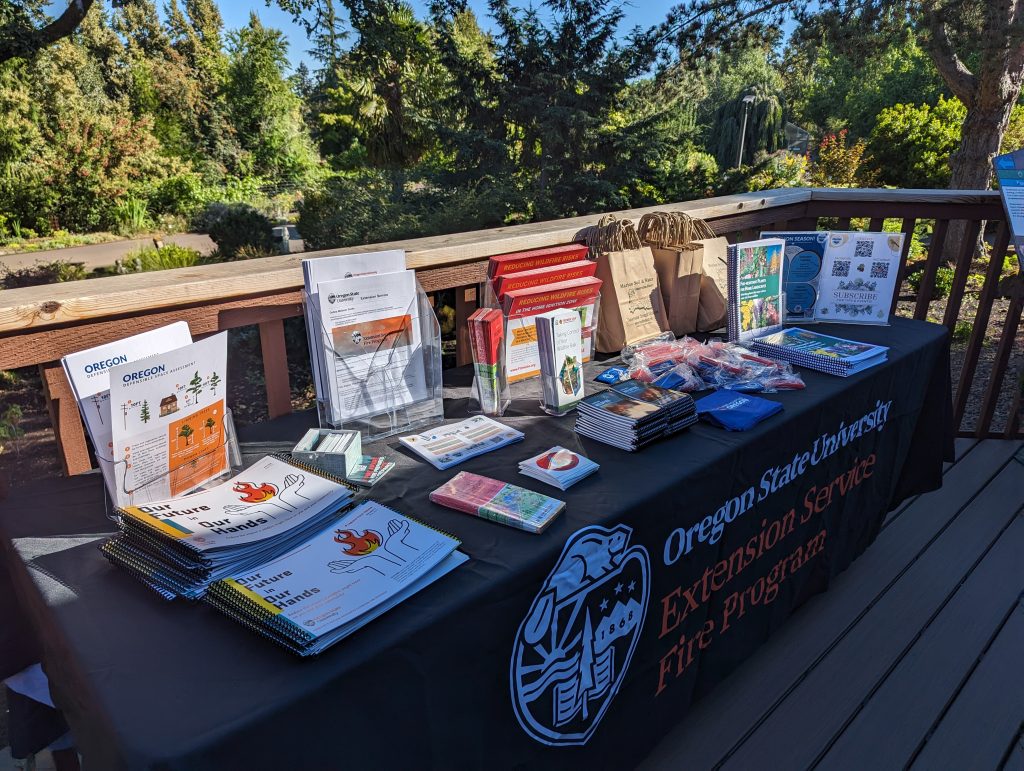
Here is a list of resources provided by instructors for this event organized by topics as well as questions asked during the workshop with answers.
Home Hardening
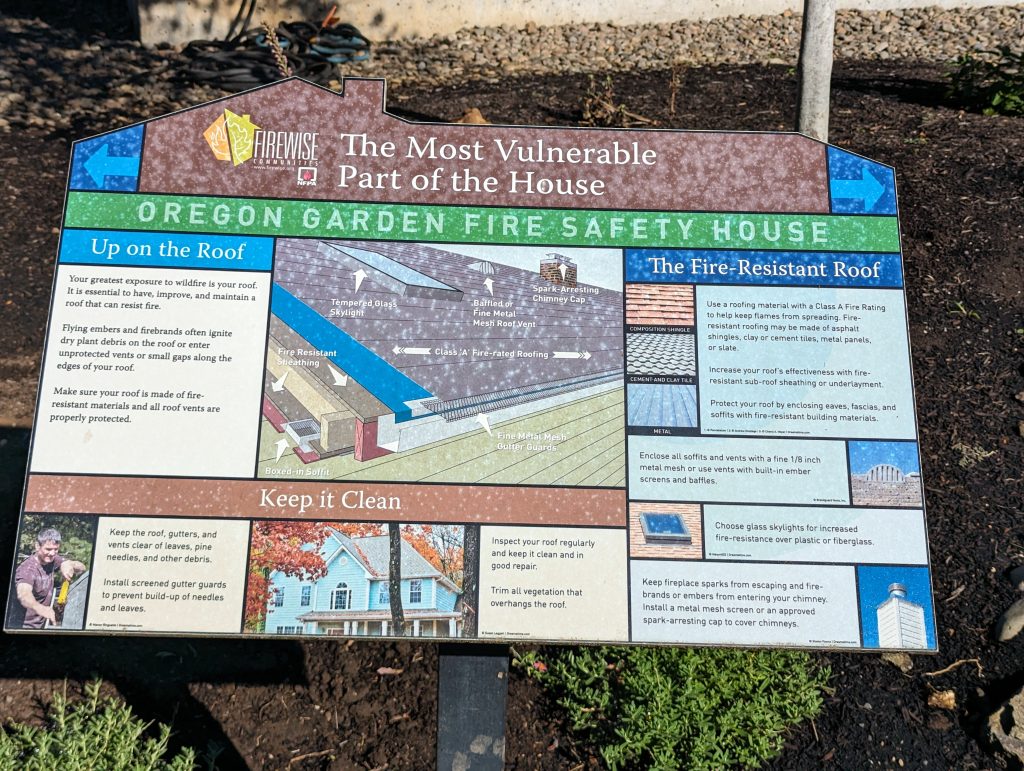
Home hardening is the process of preparing the building itself to be more resistant to wildfires.
- Home Hardening Retrofit Guide
- For home assessments, OSFM and local fire districts are offering this service as part of a new initiative.
Defensible Space
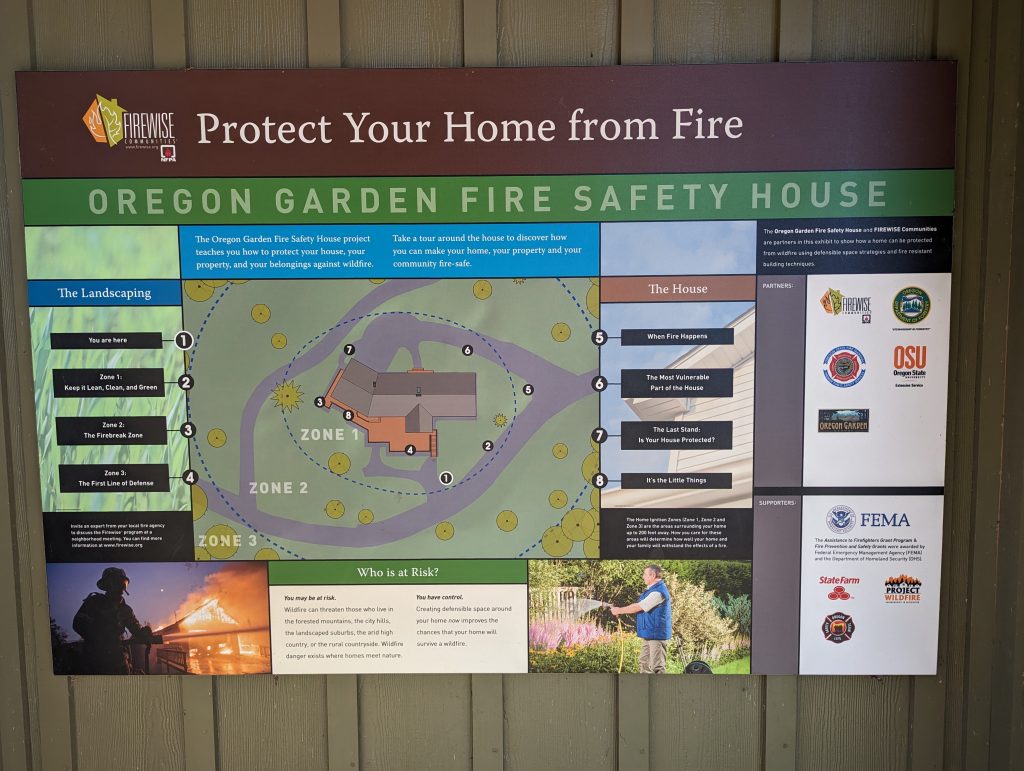
Defensible space is the area around a building or structure that can be prepared to mitigate the risk of wildfire. Defensible space is broken into three zones: Immediate Zone: 0-5′ from the building, Intermediate Zone: 5-30′ from the building; and Extended Zone: 30 to 100′ or 200′ on slopes greater than 25%.
- Homeowner’s Home Ignition Zone Checklist (the one we used in the class assessments).
- Defensible Space and Fuels Reduction Guide
- Preparing ignition zones in English and Spanish
Emergency Preparedness
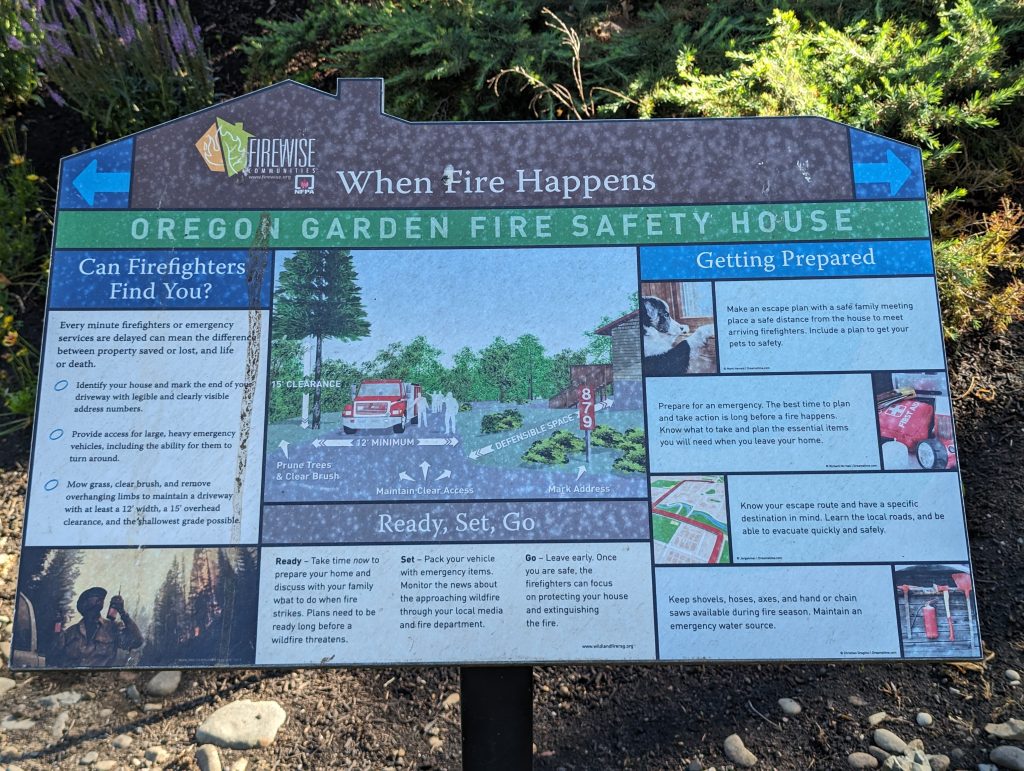
Emergency preparedness is being prepared and ready to evacuate in the case of an emergency.
- Sign up for emergency alerts for Marion-Polk County
- A guide from OSU Extension on creating a plan, preparing your home, caring for your mental health, and protecting yourself from wildfire smoke.
- Create an Emergency Go-bag
- Evacuation Guide
- Create a Wildfire Action Plan
Fire Resistant Landscaping
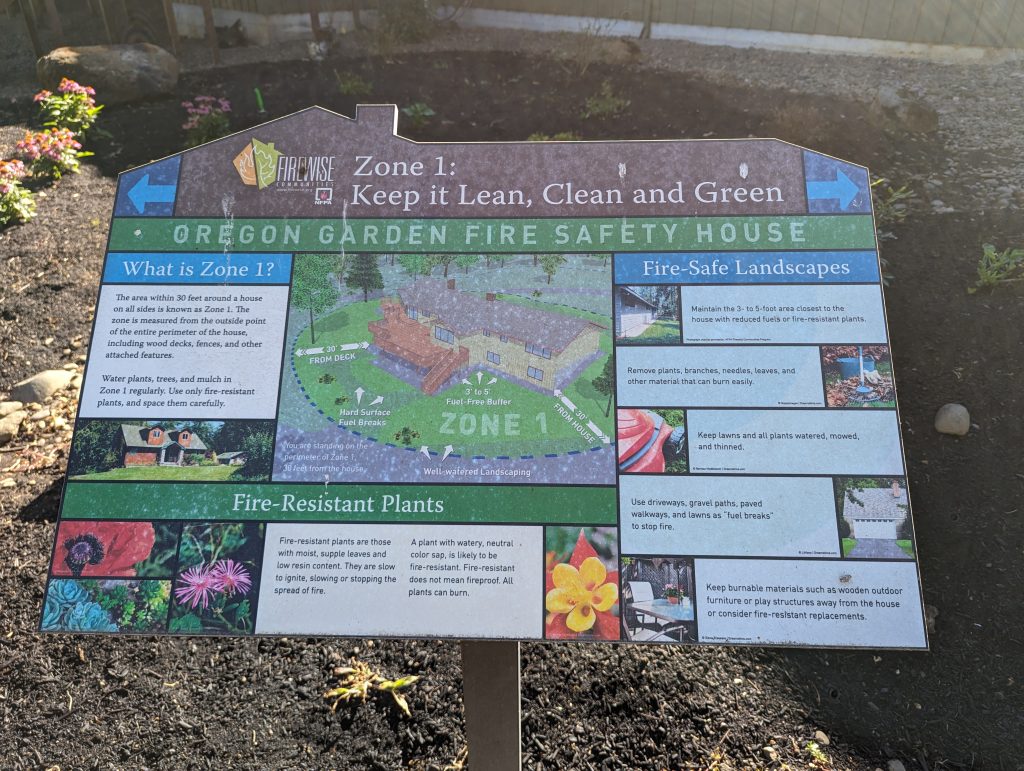
Fire resistant landscaping is designing and implementing landscaping practices that minimize the risk of ignition and slows the spread of wildfire.
Additional Resources
- Real-time map of fires in Oregon
- Oregon Wildfire Risk Explorer
- Marion County Emergency Management Program
- Resources for Forests, Woodlands, and Rangelands
- Prescribed Fire
- Learn more about and participate in Marion County’s Community Wildfire Protection Plan (CWPP). Want to help contribute to Marion County’s CWPP? Please take the time to fill out this survey to help provide information for updating Marion County’s Community Wildfire Protection Plan. The survey closes October 1, 2023, at 5:00 p.m.
Questions and Answers
What kind of funding opportunities are available for landowners?
- The Dept of Forestry currently has a grant to support landowners doing fuel reduction work on their properties in the Santiam Canyon area. If interested in more information, contact: Ben Sproul: Ben.N.SPROUL@odf.oregon.gov.
- If you are outside of the canyon, Ben can help you understand your options for fuels management on forested properties.
- Glenn Ahrens (OSU Extension Forester) may also be available for consultations.
- Marion Soil and Water Conservation District also has a conservation assistance grant (CAG) which can support various conservation focused projects such as fuel breaks, woody residue treatment, critical planting areas, brush management, and forest stand improvement.
What about solar panels? Are they fire-resistant?
- Solar panels are not fireproof. The biggest issue with solar panels, especially those that are mounted on roofs, is they are another location for leaves, needles, and other debris to accumulate…mostly under them. It’s important that these areas are kept clean of debris, so embers don’t have an ignition source.
What about fire-resistant paint for siding and stain for decks?
- NFPA hasn’t endorsed them in the past. Definitely something to keep an eye on because there’s always new developments happening. I’ve seen the gels or foam being pushed hard the last couple years as an application that can be applied by the homeowner before the fire hits, and they leave. The problem with these is they only last so long before they dry out and are not effective or need re-hydrated. If you add them too early, they don’t buy you anything.
If you have a wooden fence that attaches to your house, can you add metal flashing on your house, and will it help?
- A piece of flashing between your house and a fence post will probably help a little but is likely not enough to make a big difference in the long run if the fence is on fire. Even if you had non-flammable siding, I would still recommend keeping the wooden fence away from the house to keep direct flame contact away.
How do I know if I have tempered glass windows?
- This is a question for Google!
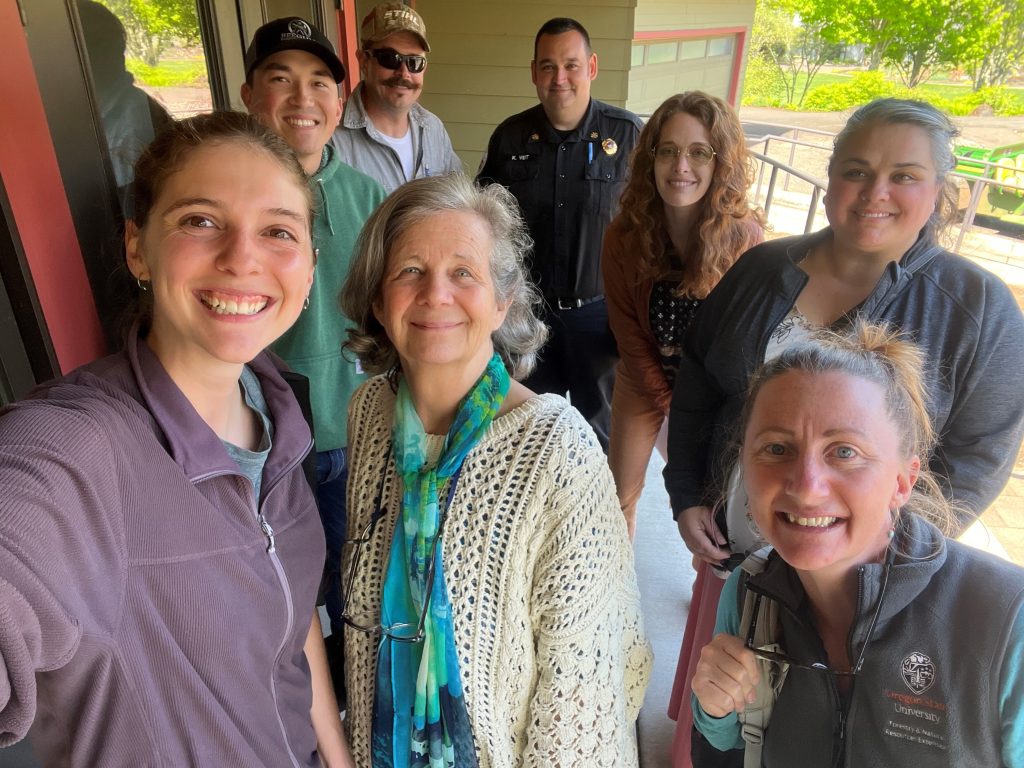
Thank you for taking the time to review the resources from our Conservation Club event!
About the Author

Feel free to reach out with any questions or if you would like resources related to urban conservation! I can also assist you in creating wildlife habitat in developed areas of the County through the Little Habitat Project.
